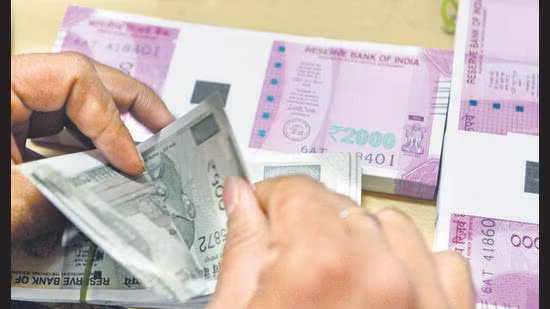- Courses
- GS Full Course 1 Year
- GS Full Course 2 Year
- GS Full Course 3 Year
- GS Full Course Till Selection
- Answer Alpha: Mains 2025 Mentorship
- MEP (Mains Enrichment Programme) Data, Facts
- Essay Target – 150+ Marks
- Online Program
- GS Recorded Course
- Polity
- Geography
- Economy
- Ancient, Medieval and Art & Culture AMAC
- Modern India, Post Independence & World History
- Environment
- Governance
- Science & Technology
- International Relations and Internal Security
- Disaster Management
- Ethics
- NCERT Current Affairs
- Indian Society and Social Issue
- NCERT- Science and Technology
- NCERT - Geography
- NCERT - Ancient History
- NCERT- World History
- NCERT Modern History
- CSAT
- 5 LAYERED ARJUNA Mentorship
- Public Administration Optional
- ABOUT US
- OUR TOPPERS
- TEST SERIES
- FREE STUDY MATERIAL
- VIDEOS
- CONTACT US
India Opens Doors to Foreign Universities
India Opens Doors to Foreign Universities

Why in News?
- Several top foreign universities from the U.S., U.K., Australia, and Canada are planning to set up campuses in India, mainly in GIFT City (Gujarat) and Navi Mumbai.
- This move comes after policy changes under the National Education Policy (NEP) 2020 and new UGC regulations allowing foreign institutions to operate in India.
|
GIFT City (Gujarat International Finance Tec-City)
National Education Policy 2020
|
Key Highlights
- Foreign universities from countries like the U.S., U.K., and Australia want to open branch campuses in India.
- They are doing this because fewer students are enrolling in their home countries.
- These universities depend heavily on international students for revenue.
- India’s student population is large and growing, with over 40 million in higher education.
- India offers an affordable education market with rising demand for better quality institutions.
- However, India’s gross enrolment ratio in higher education is still low (under 30%).
- Most Indian families may find foreign university fees too expensive.
- Other countries (e.g., China, Southeast Asia) had mixed success with foreign campuses.
- Many Indian students may still prefer to study abroad for exposure and jobs.
- The success or failure of the first few campuses in India will decide the future of such partnerships.
|
Gross Enrolment Ratio
|
Impacts on India
|
Positive Impacts |
Negative Impacts |
|
|
|
|
|
|
|
|
|
Brain Drain:
|
Challenges and Way Forward
|
Challenges |
Way Forward |
|
Low Gross Enrolment Ratio (GER) |
Strengthen school-to-college transition and increase awareness in rural areas |
|
High cost of foreign degrees |
Offer scholarships, fee caps, or hybrid fee models |
|
Limited access for rural/poor students |
Promote digital campuses and regional centres |
|
Mixed success in other countries |
Learn from global examples and ensure strict regulation and quality control |
|
Preference for studying abroad |
Focus on international-quality exposure, industry links, and placements in Indian campuses |
|
Ensure IAS Mains Question Q. Discuss the potential benefits and challenges of allowing foreign universities to set up campuses in India. In your view, how can India strike a balance between globalisation and equity in higher education? (150 words) |
|
Ensure IAS Prelims Question Q. With reference to foreign universities in India, consider the following statements:
Which of the statements given above is/are correct?
Answer: a Statement 1 is correct: The National Education Policy (NEP) 2020 and UGC regulations allow top-ranked global universities to establish independent campuses in India, aiming to internationalise and improve Indian higher education. Statement 2 is correct: Foreign universities face declining student enrolment in their home countries due to ageing populations and saturated markets, so they are exploring India’s large and growing student base for expansion. Statement 3 is incorrect: India’s Gross Enrolment Ratio (GER) in higher education is just under 30%, not over 50%, indicating that a large portion of eligible youth is still outside the college system. |



